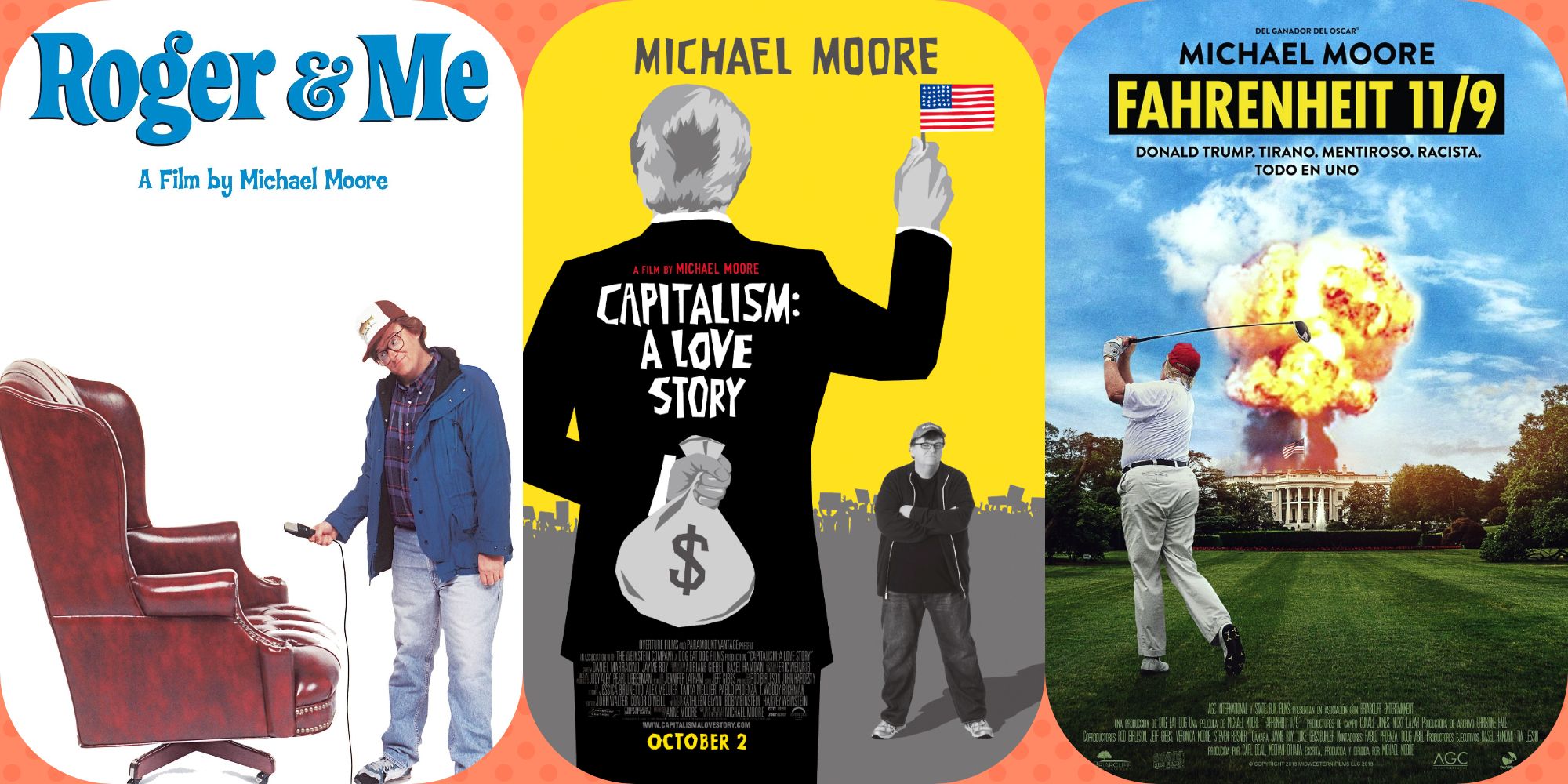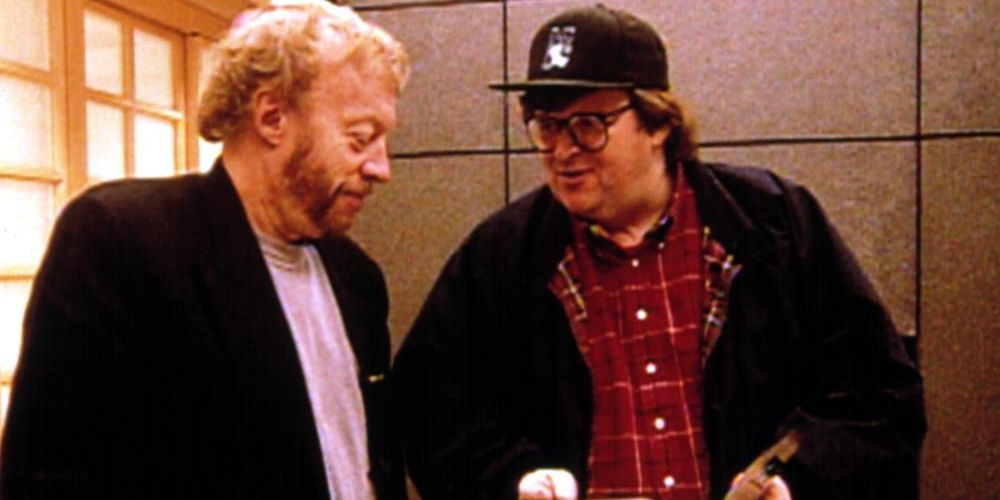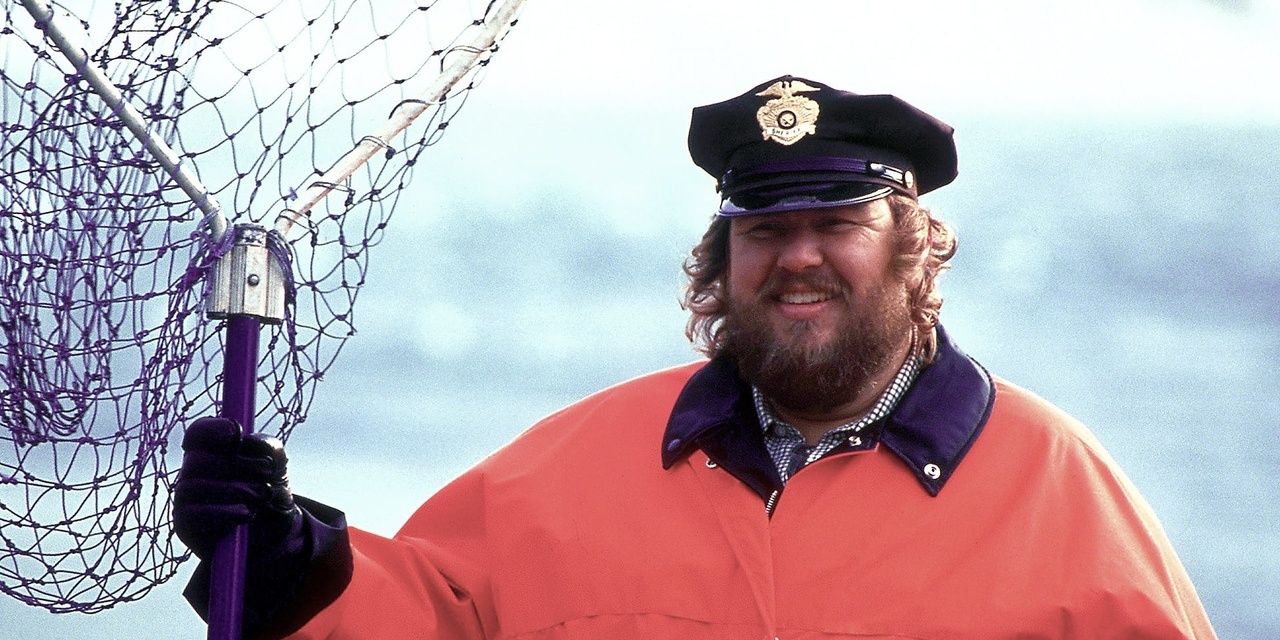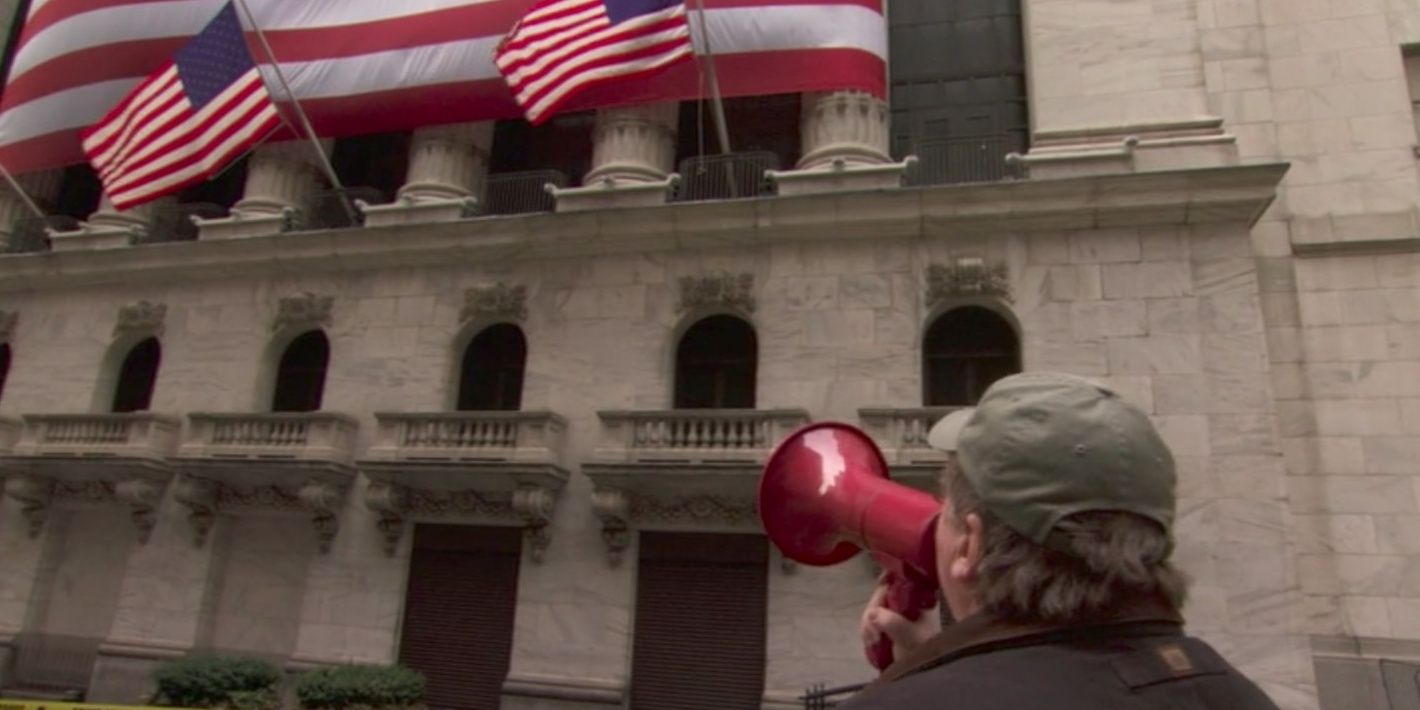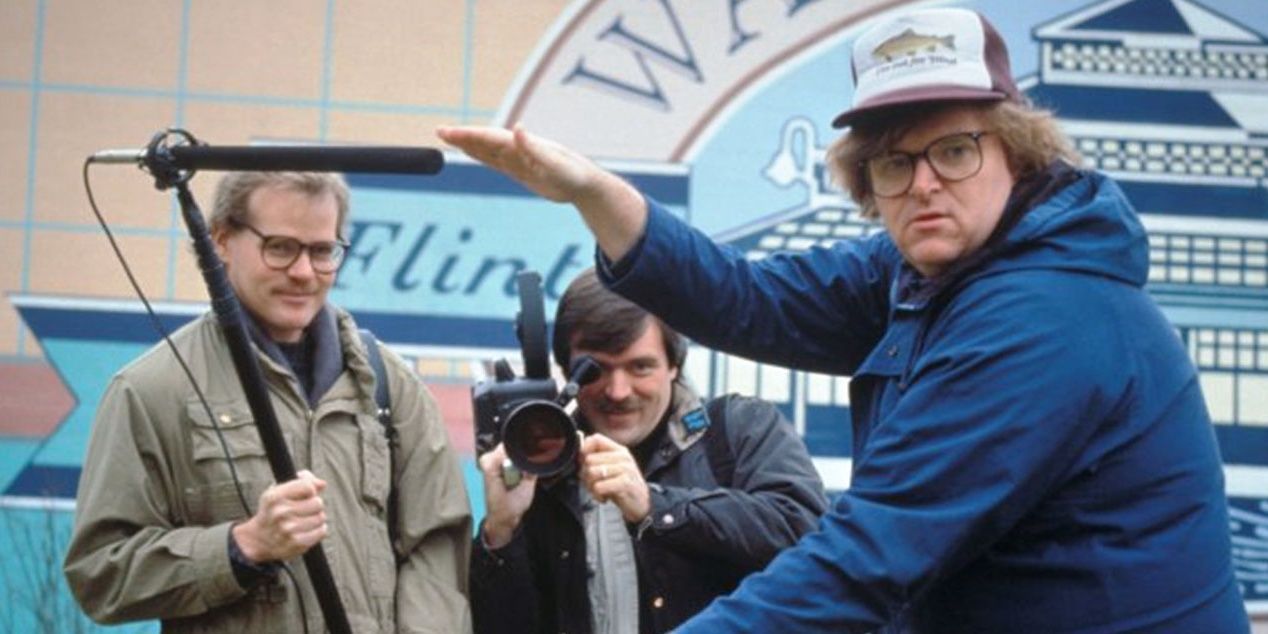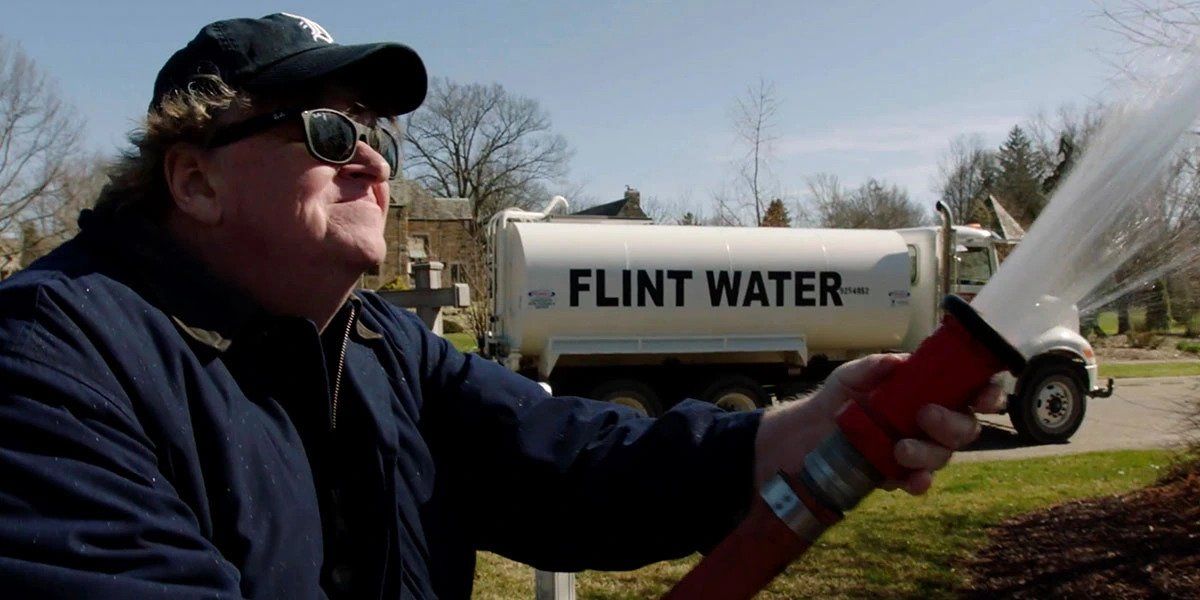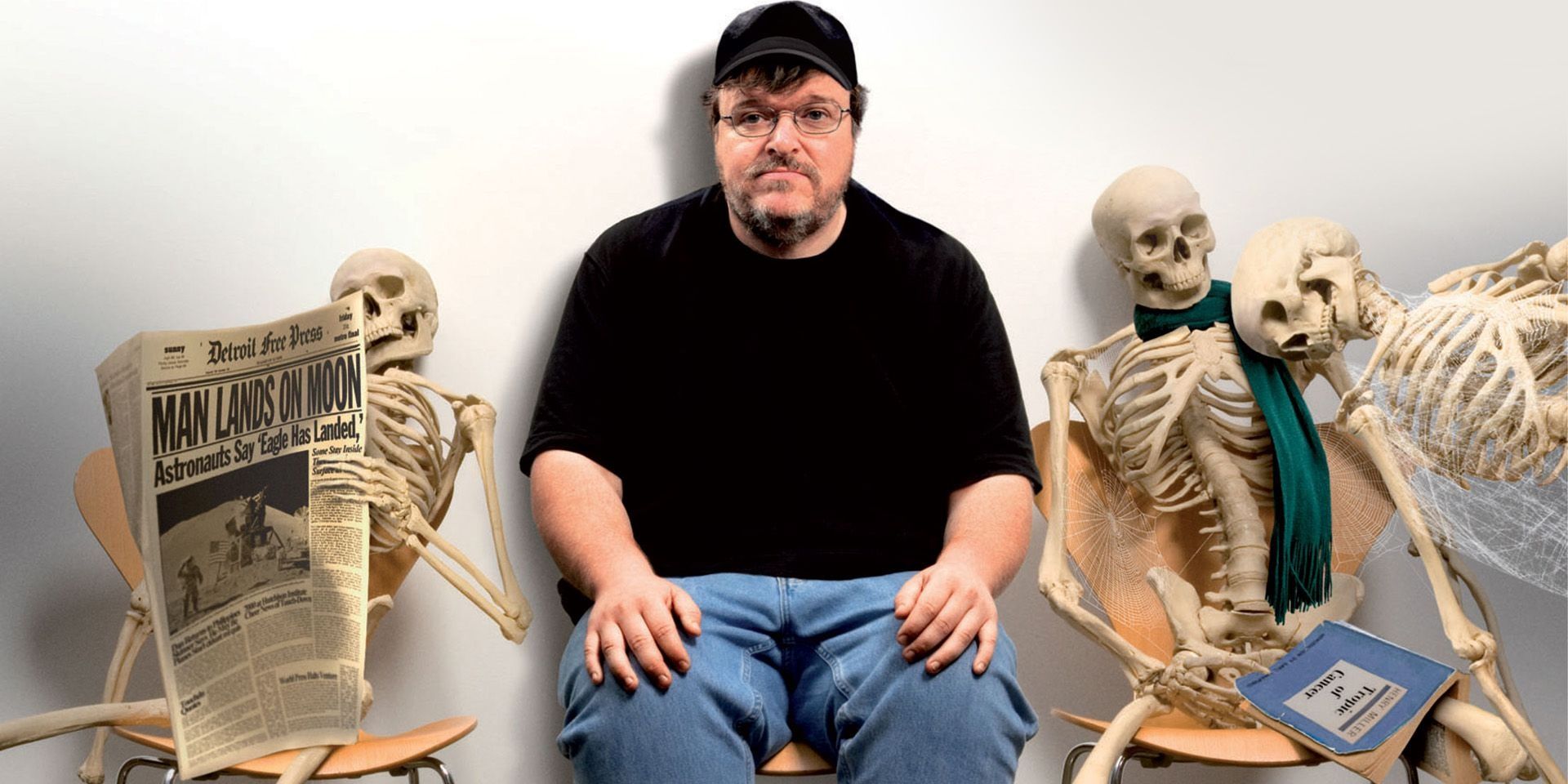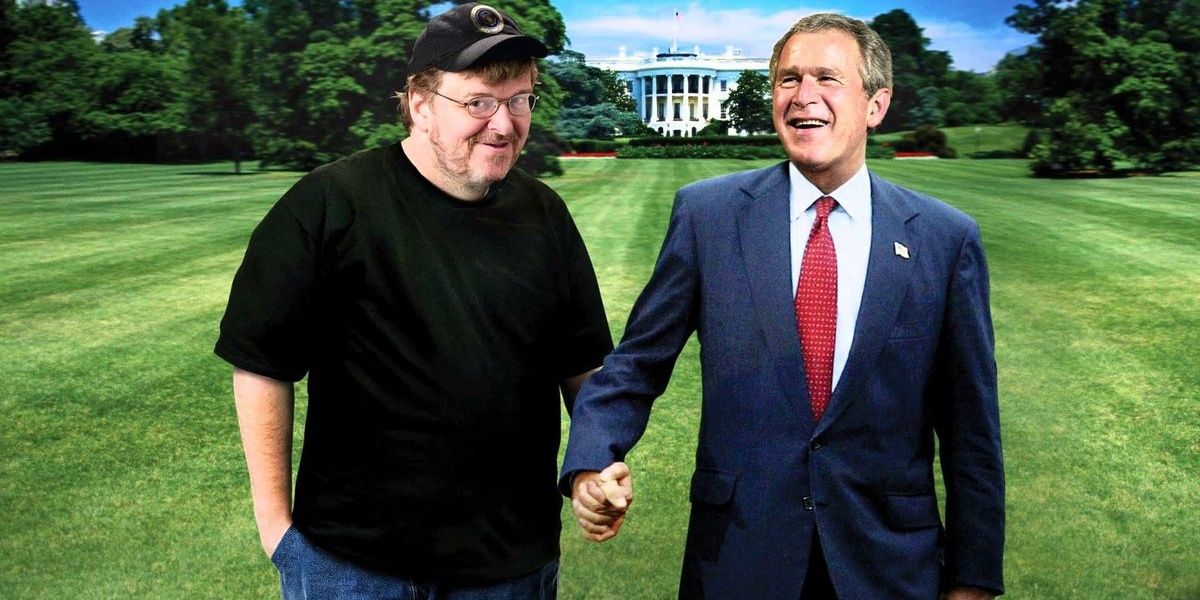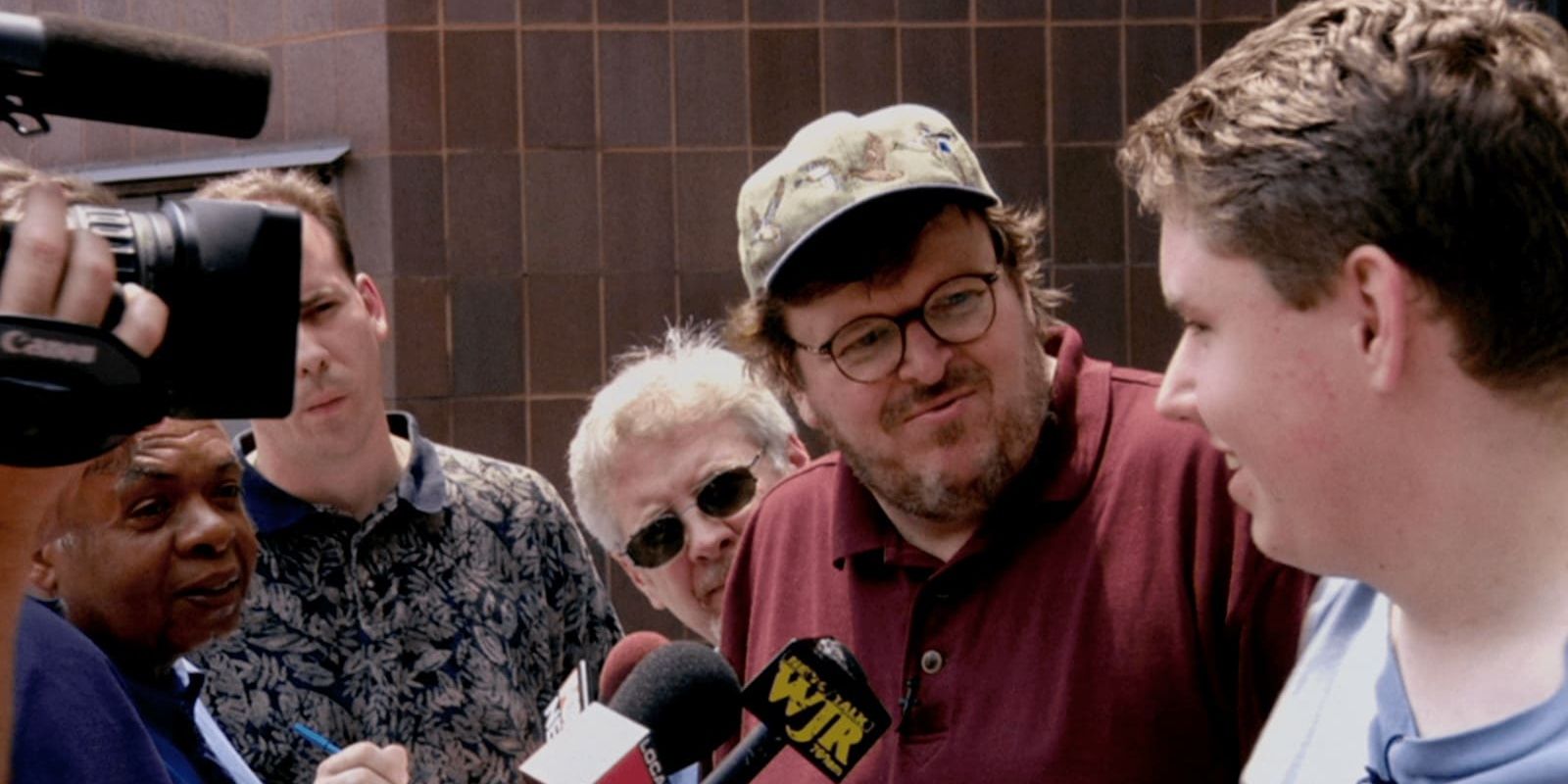Few filmmakers are more controversial and polarizing than Michael Moore. Perhaps the world’s most famous documentarian, asides from David Attenborough, Moore’s left-wing meditations on corruption, workers’ rights, the prison industrial complex, gun culture, healthcare, as well as numerous other topics are responsible for raising cultural awareness among millions of viewers over the last four decades.
Moore has carved out a unique spot in pop culture with his trademark cheekiness, humor, and man-on-the-street tactics. As of 2022, he has directed 11 feature films (ten documentaries and one narrative fiction film). His work varies from smug and unnecessary to empathetic and indispensable. Love him or hate him, he’s made a loud, indelible impression on the cinematic landscape.
11) ‘Slacker Uprising’ (2007)
Slacker Uprising (aka Captain Mike Across America) is barely a movie. It would be more at home as a DVD extra feature or a one-off TV special. Before the US presidential election of 2004, as a response to John Kerry and the Democratic Party’s inability to build a substantial lead over sitting president G.W. Bush, Michael Moore went on a massive tour of America to oust Bush from office. He is joined by a myriad of celebrity guests, including but not limited to Eddie Vedder, Tom Morello, Virgo Mortensen, and ironically, Roseanne Barr. They all give brief, impassioned speeches or sing lame protest songs: we don’t even get to see REM perform! As we all know, Kerry lost in 2004, so Moore postponed Slacker Uprising’s release until 2007.
Watching Slacker Uprising is like watching a Super Bowl where the losing team takes an obnoxious victory lap while the winning team sets the stadium on fire. It’s 100 minutes of Moore patting himself on the back, exuding his smuggest qualities. He’s more focused on showing the viewers how popular he is and how many celebrities he hangs around than making a compelling movie. Moore’s often been criticized for using his films to publicize himself as much as the issues he’s talking about, and Slacker Uprising is the greatest example of that. He barely talks about policy, just vague notions of civic duty. He spends the entire time ranting about how Bush is a liar and awful leader but doesn’t include what policies the Dems have that are going to make things better. It’s by far Moore’s most dated and inconsequential effort.
10) ‘Michael Moore in Trumpland’ (2016)
Michael Moore in Trumpland is essentially a revamped version of Slacker Uprising released before the 2016 presidential election. However, at only 70 minutes long, it’s gratefully brief and doesn’t waste much time. Moore puts on a lecture in Wilmington, Ohio, for a crowd full of swing voters. In this show, he talks about why Donald Trump is far more of a threat to win the election than the Democrats are letting on. Many of his predictions were correct and insightful in a way that his journalistic peers fell pathetically short. While Moore’s movie is a plea to constituents to vote for Hilary Clinton, he also addresses the many societal failings of traditional politicians that made Donald Trump an “appealing outsider” to many disaffected voters.
Unfortunately, like Slacker Uprising, Michael Moore in Trumpland illustrates many of the documentarian's worst tendencies. His comedic stylings are just lame and conceited, and it's an unnecessary exercise in self-promotion. Moore would also go on to direct Fahrenheit 11/9 in 2018, which tackles the same issues in a far more entertaining and enlightening way.
9) ‘The Big One’ (1997)
There’s a giant leap in quality from Michael Moore in Trumpland to The Big One. The Big One is full of his trademark, self-deprecating humor that the former films on this list lack. This doco follows Moore as he’s doing a tour for his book, Downsize This!, yet he utilizes this tour as a vehicle to gauge the everyday struggles of US citizens around the nation. In varying cities, he interviews middle-aged Americans working harder now than when they were 30 and workers trying to start a union. He also talks to laborers whose productive factories have been shut down, ironically fired because their workshop was too productive.
The reason The Big One is so much better than Slacker Uprising and Trumpland is that in 1997, Michael Moore was not yet the superstar filmmaker he is today, so he couldn’t merely coast on his celebrity status. He’s focused on the welfare of his fellow Americans and less concerned with publicity. There are moments in The Big One that are as transgressive and provocative as his best films, though they’re not the meat of the movie. There are a few scenes of Moore doing what he does best: confronting corporate leaders and asking them bluntly why they’re eliminating jobs. The highlight is the climactic interview where Moore runs circles around the disingenuous and exploitative Nike CEO Phil Knight. This takedown is cathartic and exceptionally amusing.
8) ‘Canadian Bacon’ (1995)
Canadian Bacon is a political spoof movie about the US president (Alan Alda) starting a fake war with Canada to increase his poll ratings. It stars the late, great John Candy as a dim-witted sheriff, easily radicalized by the government’s anti-Canadian propaganda. The last film of his to be released, it’s a sad reminder of what an irreplaceable talent John Candy was. He’s also supported by a fantastic secondary cast featuring Rhea Perlman, Kevin Pollack, and Rip Torn.
Canadian Bacon was surprisingly prescient in predicting the crazy antics of future administrations, from the Whitehouse serving fast food to their guests to the government lying their way into a war with a non-aggressive nation. Plenty of scenes feel like they were solely written just for Moore to get his political points across, the third act is a mess, and the parody-movie sound effects are lazy and out of place. But if you can get past its flaws, it’s a surprisingly strong comedy from Moore, especially when compared to conservative narrative equivalents like God’s Not Dead or True Allegiance.
7) ‘Capitalism: A Love Story’ (2009)
Capitalism: A Love Story is about the lack of humanity those with authority have for those without power. It examines the cruelties of capitalism, including the predatory housing market, mafia-esque healthcare companies, and the prison industrial complex, which incentivizes judges to send non-violent juveniles to prison for minor crimes. The catalyst for this 2009 doco was the housing crisis of 2008. Moore equates the USA with Rome, a once great empire, now using the façade of decadence to hide its inner decay. A typical family of five could live easily and comfortably with the salary of one breadwinner in the 1950s. Yet, in the modern USA, everyone from teachers to pilots has to get second jobs to keep up with their monthly rent. The most unexpected revelation in this movie is when Moore interviews several priests and bishops who call capitalism a great evil and incompatible with the teachings of all major religions.
Moore’s film asks, “Why is it that the lower class can be robbed of billions by corporations with no consequence, but a teenager stealing from a convenience store can be sent to jail for years?” He places most of the blame for the USA’s deterioration at the feet of big business and billionaires who have put a stranglehold on politicians, as well as President Ronald Reagan’s decision “to run America like a corporation.” It’s not his best work, the subject is a bit too broad, and he’s made many of the same arguments in better films, but Capitalism: A Love Story is worth your time.
6) ‘Roger & Me’ (1989)
This 1989 debut doco from Moore was a smash hit with critics and put Michael Moore firmly on the map. A deeply personal movie for Moore, Roger & Me is about the devastating impact Reaganomics had on the industrial industry in the 1980s. Moore is from Flint, Michigan, the birthplace of automotive giant General Motors. Roger & Me is about Moore’s quest to obtain an interview with Roger Smith, the GM CEO who out-sourced tens of thousands of jobs and union-busted despite GM making record profits.
Framed as a comedic game of cat-and-mouse, Smith ducks and weaves every attempt by Moore to sit down and discuss the layoffs. Roger & Me is the playground where Moore experimented with ideas and techniques that would become his standard modus operandi.
5) ‘Where to Invade Next’ (2015)
The premise of Where to Invade Next is simple. Michael Moore “invades” other countries, finds out what policies they have that could benefit the USA, and returns to implement those policies in America. He travels to Italy, where he’s aghast at their eight weeks paid annual vacation. He’s stunned by Germany’s refusal to whitewash their history. He discovers that despite no homework and fewer hours, Finland has the greatest schooling in the world: public school cafeterias in France pay less money for healthier meals than their US counterparts. Did you know that Papua New Guinea and the USA are the only developed countries that don’t guarantee paid maternity leave? Or that college is entirely free in Slovenia and over a dozen other first-world countries? Some facts Moore “uncovers” in Where to Invade Next will have you stunned.
It’s a rebuke of every insincere politician who argues that fixing societal issues costs too much or isn’t feasible. Not only are all these fixes possible, but they’re also cheaper and simpler than how things are currently run in the US. There is less archival footage in Where to Invade Next than in his other films, making Moore’s most visually varied and beautiful-looking project by far. After about an hour, Where to Invade Next becomes a bit repetitive and loses steam, but the message remains frustratingly valid.
4) ‘Fahrenheit 11/9’ (2018) 7/10
If American democracy is a dam, Michael Moore’s career has revolved around bringing attention to the cracks that threaten this dam’s structural integrity. Donald Trump’s election in 2016 was that dam bursting. Fahrenheit 11/9 discusses everything surrounding the 2016 election of Donald Trump. Moore’s doco is one of the most substantive and vicious takedowns of Trump you’ll find. But Trump isn’t the sickness; he’s just the ugliest symptom. From the Democrat's pied-piper strategy, which treated Trump as a joke, to their rigging of the primaries against Bernie Sanders, to the Clinton campaign’s overconfidence that resulted in them barely campaigning in any battleground states, Fahrenheit 11/9 is a brutal scolding of neoliberalism and establishment politicians.
The 30 years preceding 2016 embodies the phrase "play stupid games, win stupid prizes," and Michael Moore is here to say, “I told you so.” Only, his tone isn’t obnoxious or smarmy like it comes across in some of his previous efforts like Slacker Uprising. Moore’s tone is that of a disappointed father, with a twinge of guilt that he couldn’t have done more to prevent the 2016 disaster. This movie also sheds light on the impact these institutional problems have on poorer neighborhoods, focussing on the water crisis in Flint, Michigan, and how politicians, advisors, and cronies covered up the issue for profit. It’s a tightly edited, funny, and snide Michael Moore joint: it shares all the strengths of his best films.
3) ‘Sicko’ (2007)
For viewers outside the USA, Sicko is a crazy experience. Sicko is a brutal biopsy of the US’s for-profit healthcare system, illuminating its weaknesses by comparing and contrasting it with the much greater success of socialized medicine in the rest of the Western world. Anywhere from 18,000 to 45,000 people die annually in the USA due to lack of healthcare: it's an incredibly sobering statistic when every other developed country promises their citizens some variant of free healthcare. Sicko is Michael Moore’s most infuriating movie. It’s a compilation of horror stories from individuals who have to choose between paying the rent and paying for their meds, between going to a doctor and eating. To make it even more depressing, many of the individuals he interviewed for Sicko died due to their lack of coverage before the movie even premiered.
Cruelty isn’t just the bi-product of this predatory system; it’s a feature. Anyone with a shred of empathy knows that the current system is cruel, but those with money and power are willing to let people die to help their bottom dollar. Even millions of Americans with insurance have been bankrupted and had to sell their possessions or homes due to medical bills. In Sicko’s grandest gesture, Moore takes some 9/11 first responders to Cuba because Cuba’s healthcare system offers better care than the US. This raises the question, if we treat these supposed heroes with such disdain, what chance do the rest of us have? It’s a smart and emotional rebuke that shocks you out of complacency.
2) ‘Fahrenheit 9/11’ (2004)
The winner of the 2004 Palme d’Or at the Cannes Film Festival was an unprecedented documentary phenomenon. Moore’s previous film, Bowling for Columbine, was one of the highest-grossing docos of all time, but Fahrenheit 9/11 blew it out of the water, grossing over 200 million dollars worldwide. This revelatory and boundary-pushing documentary is the definitive examination of American culture and politics following the aftermath of the September 11th attacks of 2001 and the subsequent 2003 invasion of Iraq.
If you haven’t seen it yet, you must. Moore sets his aim on the incompetency of the G.W. Bush administration, a flaccid corporate media, and moneyed interests that pushed a war based solely on lies and fear. Regardless of the politics, it’s a brilliantly put-together movie. The craftsmanship on display is as impressive as any documentary you’ll ever see. It’s disturbing, devastating, and refreshing, an essential part of 21st-century political discourse.
1) ‘Bowling for Columbine’ (2002)
It may be the obvious choice, but Bowling for Columbine is Michael Moore’s greatest cinematic achievement. It was a smash hit and made the sardonic director a household name. Along with Fahrenheit 9/11, it is responsible for mobilizing and enlightening countless viewers about the values of equality, social democracy, and empathy.
For a film about America’s gun obsession and the depressing epidemic of mass shootings, Bowling for Columbine manages to be intermittently hilarious. Regardless of how you feel about his personality or ideology, it’s impossible to deny that Moore is an engaging director and an effective communicator. Bowling for Columbine is home to some of the most impressive editing, voice-over work, music, and emotional scenes ever found in a documentary. It’s a must-see for everyone interested in the power of cinema.

